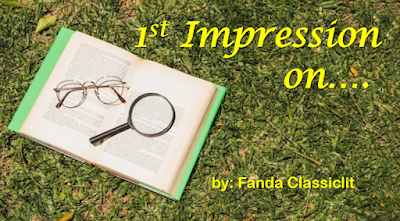 |
| Cover of the English translation |
Set in the tumultuous days of the mid 1960s, "The Dancer" describes a village community struggling to adapt to a rapidly changing world. It also provides readers with a ground-level view of the political turmoil and human tragedy leading up to and following the abortive Communist coup. This trilogy of novels traces the lives of two characters: Srintil, a dancer whose unwitting involvement with the region's leftist propaganda machine sets her at odds with Rasus, the love of her life who embraces Islam and finds a career in the army. Through their separate experiences, both learn the concepts of shame and sin: Rasus after he leaves their home village and journeys into the wider world and Srintil when the outside world finally comes crashing into her remote and isolated village.
I am reading the Indonesian novel
edition, though, with its bright orange cover. Though the story isn't really as bright as the
cover!
About Ronggeng
Quoting from wikipedia: "Ronggeng is a type of Javanese dance in which couples exchange poetic verses as they dance to the music of a rebab or violin and a gong. The term "ronggeng" also applied for this female dancers. During a ronggeng performance, the female professional dancers are expected to invite some male audiences or clients to dance with them as a couple with the exchange of some tips money for the female dancer, given during or after the dance. The couple dances intimately and the female dancer might perform some movements that might be considered too erotic by standard of modesty in Javanese court etiquette. In the past, the erotic and sexual nuance of the dance gave ronggeng a shady reputation as prostitution disguised in the art of dance."
 |
| Ronggeng Dance by P. A. van der Lith (1893-1894) |
Ronggeng and Geisha
From what I've been reading so far, I gathered that ronggeng is the "lower" version of geisha. While geisha is usually multi-talented, ronggeng's skill is mainly dancing and a little singing. They both entertained men - geisha, those of the upper classes; ronggeng, the lower working classes. One more striking similarity: to become eligible, there's a special rite they must perform, where their virginity would be sold to the highest bidder (I've at least gathered that about geisha from Memoirs of a Geisha by Arthur Golden). To become either geisha or ronggeng is regarded as an honor, and little girls dreamed to have such career. Geisha is perhaps more of honorable and intelligent entertainer, but ronggeng is plain prostitute disguised as dancer!
The 1960s Political Turmoil
The Indonesian genocide or Indonesian politicide was a mass killings primarily targeting members of the Communist Party of Indonesia (PKI), but also people or organizations suspected to be sympathizers of the ideology. It is estimated that between 500,000 to 1,000,000 people were killed during the main period of violence from October 1965 to March 1966.
Two rather unappealing historical facts in a novel - though the political turmoil, I suspect, will only appear rather later on the novel. But I decided to read through, because Tohari wrote this novel quite beautifully. I loved especially the first chapter, where he described the rustic beauty of Indonesian life in a small village - tranquil in its nature and simplicity - before modern life touched it.
I’m curious how the story and its characters would develop from that. I'm not really excited about this book – it might be a bit of a struggle for me - but let's just see!


No comments:
Post a Comment
What do you think?